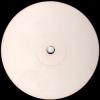Hi, everyone!
We are planning to create an unusual real-life escape room. It features 15 rooms and 6 teams playing simultaniously in competitive mode: 3 teams VS 3 teams.
I have created some ordinary real-life escape rooms, but this is something new to me. It feels more similar to video games. I have layed out rooms, designed mechanics, plot, some puzzles, but when I start to actually write down the sequence of interactions it is such a mess! I get frustrated keeping track of who does what and where and for how long.
I really need a good advise about how to cope with all that complexity. Is there a smart way to plan everything out? Charts? Tables?








